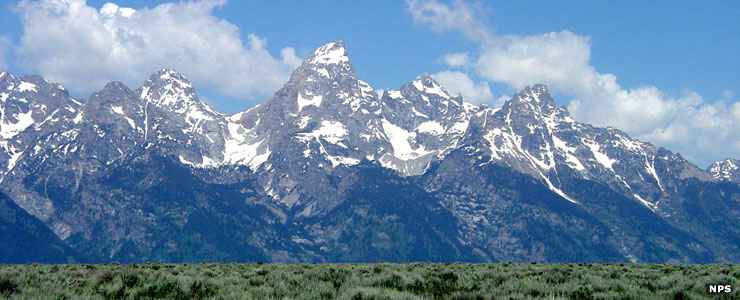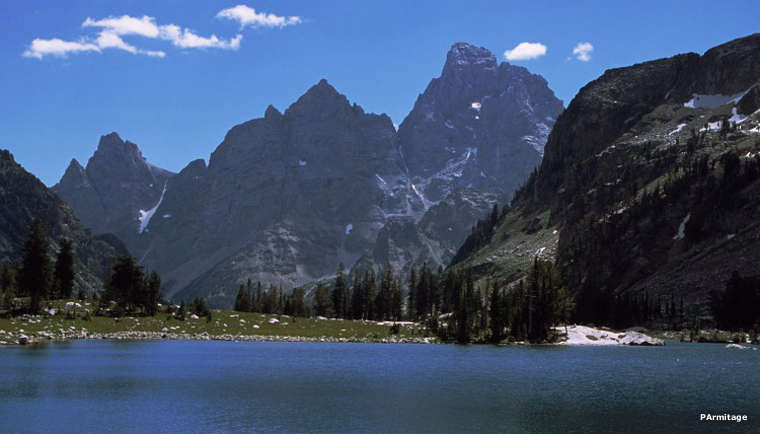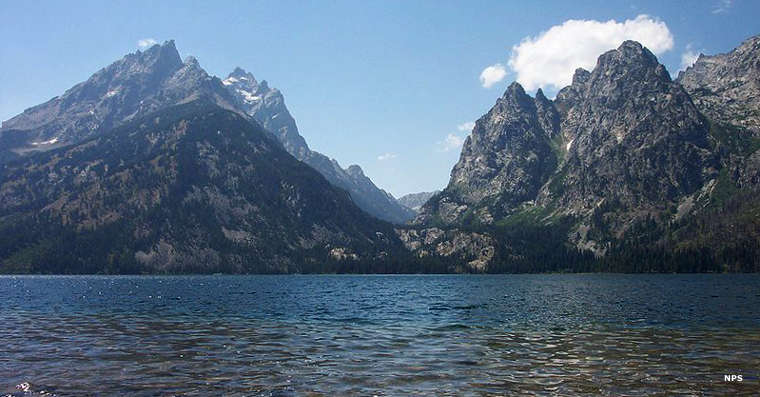Grand Teton National Park

The Grand Tetons

String Lake
The Teton Mountains make one of those signature photos that folks all over the world recognize when they see it. The Tetons are a sharp, solid chunk of ancient granite uplifted as one block of rock. Because of the way the mountain range was formed, there are no foothills. Instead, the ancient granite was pushed up as one 40-mile-by-8-mile chunk and the land in front of it was dropped (which is why it is now called "Jackson Hole"). With the cessation of the original uplift, the tops of the mountains and the valley floor were separated by about 30,000 feet of elevation. Erosion over the millions of years since that event has worn the mountains down and filled in the valley so that today, the difference in elevation is less than 7,700'. The granite that forms the mountains is among the oldest rock exposed on the surface of the planet while the mountain range itself is one of the youngest.
The mountains have been heavily carved by glaciers and when those glaciers retreated at the end of the last Ice Age, they left behind massive moraines that now define the lakes and stream flows. The largest lake is Lake Jackson with a surface area close to 25,540 acres and a maximum depth of 438'. The high mountains are stark granite faces that drop to glacial cirques and hanging U-shaped valleys: classic textbook alpine topography. The highest point in the range is the summit of Grand Teton at 13,770'.
Snow starts flying in this area in November and is often on the ground into May. Average annual snowfall is around 190" and there are many areas in the mountains where the snowfields are perennial. There are hundreds of miles of hiking trails in Grand Teton National Park, many offering great panoramic vistas of the mountains and the valley. Some of the trails lead to the feet of most of the climbing routes but climbing in these mountains tends to be technical: you'll want to know what you're doing before you get yourself in trouble. Camping is allowed but you'll need a back country permit if you do it outside any of the established campgrounds (including on the peaks). Permits are not required to climb.
Grand Teton National Park attracts about 4 million visitors per year, the vast majority of them in the summer. The Craig Thomas Discovery and Visitor Center in Moose is open year-round, usually from 9 am to 5 pm but there are expanded hours when the weather gets warmer. The Center is only closed for Christmas Day but it closes early on Thanksgiving Day and Christmas Eve. There are several other visitor centers, too, but they are only open in the summer months.

A view at Lake Solitude

Cascade Canyon from across Jenny Lake
Other photos are courtesy of the USGS and National Park Service

Related Pages
Caribou-Targhee National Forest
Centennial Scenic Byway
Grand Teton National Park